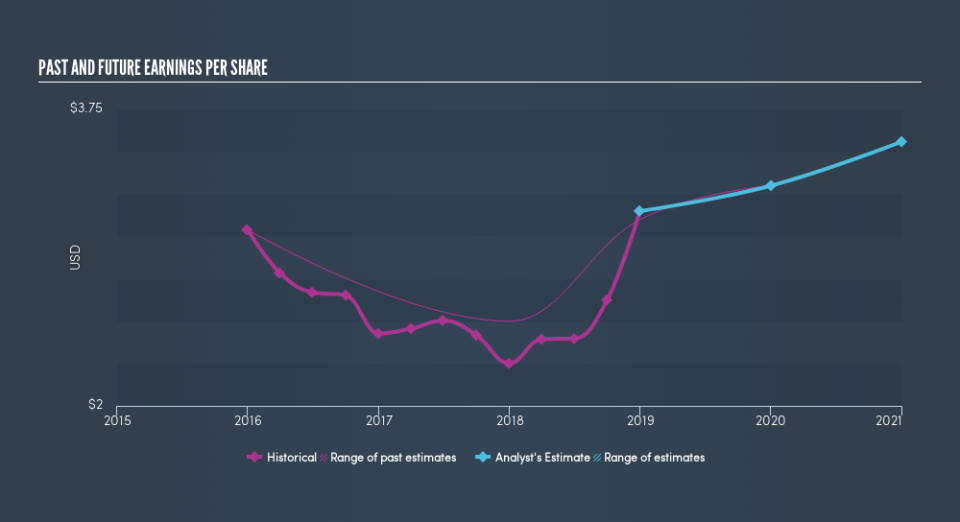The Salisbury Bancorp Share Price Is Up 60% And Shareholders Are Holding On

Generally speaking the aim of active stock picking is to find companies that provide returns that are superior to the market average. Buying under-rated businesses is one path to excess returns. For example, the Salisbury Bancorp, Inc. (NASDAQ:SAL) share price is up 60% in the last 5 years, clearly besting than the market return of around 40% (ignoring dividends).
View our latest analysis for Salisbury Bancorp
To paraphrase Benjamin Graham: Over the short term the market is a voting machine, but over the long term it’s a weighing machine. One imperfect but simple way to consider how the market perception of a company has shifted is to compare the change in the earnings per share (EPS) with the share price movement.
Over half a decade, Salisbury Bancorp managed to grow its earnings per share at 6.5% a year. This EPS growth is slower than the share price growth of 9.8% per year, over the same period. This suggests that market participants hold the company in higher regard, these days. That’s not necessarily surprising considering the five-year track record of earnings growth.
The company’s earnings per share (over time) is depicted in the image below (click to see the exact numbers).
We know that Salisbury Bancorp has improved its bottom line lately, but is it going to grow revenue? You could check out this free report showing analyst revenue forecasts.
What About Dividends?
When looking at investment returns, it is important to consider the difference between total shareholder return (TSR) and share price return. Whereas the share price return only reflects the change in the share price, the TSR includes the value of dividends (assuming they were reinvested) and the benefit of any discounted capital raising. Arguably, the TSR gives a more comprehensive picture of the return generated by a stock. We note that for Salisbury Bancorp the TSR over the last 5 years was 88%, which is better than the share price return mentioned above. And there’s no prize for guessing that the dividend payments largely explain the divergence!
A Different Perspective
Investors in Salisbury Bancorp had a tough year, with a total loss of 1.1% (including dividends), against a market gain of about 5.3%. Even the share prices of good stocks drop sometimes, but we want to see improvements in the fundamental metrics of a business, before getting too interested. On the bright side, long term shareholders have made money, with a gain of 13% per year over half a decade. It could be that the recent sell-off is an opportunity, so it may be worth checking the fundamental data for signs of a long term growth trend. If you would like to research Salisbury Bancorp in more detail then you might want to take a look at whether insiders have been buying or selling shares in the company.
But note: Salisbury Bancorp may not be the best stock to buy. So take a peek at this free list of interesting companies with past earnings growth (and further growth forecast).
Please note, the market returns quoted in this article reflect the market weighted average returns of stocks that currently trade on US exchanges.
We aim to bring you long-term focused research analysis driven by fundamental data. Note that our analysis may not factor in the latest price-sensitive company announcements or qualitative material.
If you spot an error that warrants correction, please contact the editor at editorial-team@simplywallst.com. This article by Simply Wall St is general in nature. It does not constitute a recommendation to buy or sell any stock, and does not take account of your objectives, or your financial situation. Simply Wall St has no position in the stocks mentioned. Thank you for reading.

